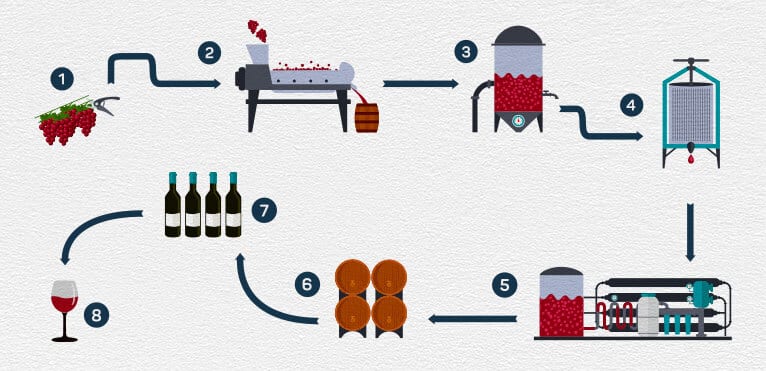Les vins sans alcool connaissent un essor important. Que ce soit pour des raisons de santé, de mode de vie ou de curiosité, de plus en plus de consommateurs s’y intéressent. Mais comment sont-ils fabriqués ? Quels sont les meilleurs choix pour boire moins de vin tout en conservant le plaisir de la dégustation ?
Pourquoi choisir un vin sans alcool ?
Le marché des vins sans alcool ne cesse de croître. Plusieurs raisons expliquent cet engouement :
- Santé et bien-être : Réduire la consommation d’alcool limite les risques pour la santé.
- Sécurité routière : Ces vins permettent de savourer une boisson raffinée sans restriction liée à la conduite.
- Grossesse et allaitement : Ils offrent une alternative aux femmes enceintes qui souhaitent apprécier le goût du vin.
- Tendances alimentaires : De plus en plus de consommateurs recherchent des boissons plus légères et moins caloriques.
Ces alternatives permettent de boire moins de vin tout en conservant une expérience de dégustation agréable.
Les méthodes de production des vins sans alcool

Le vin sans alcool suit un processus de fabrication spécifique visant à retirer l’alcool sans altérer les arômes.
1. La fermentation classique
Comme les vins traditionnels, les vins sans alcool sont produits à partir de raisins fermentés. Cette étape est essentielle pour développer les arômes et la structure du vin.
2. Les techniques de désalcoolisation
Plusieurs procédés permettent de retirer l’alcool tout en préservant les caractéristiques du vin :
- L’évaporation sous vide : Chauffe le vin à basse température pour éliminer l’alcool sans dénaturer les arômes.
- L’osmose inverse : Sépare l’alcool du reste du liquide grâce à une filtration fine.
- La distillation à la vapeur : Extrait l’alcool en conservant les composés aromatiques essentiels.
Ces méthodes permettent d’obtenir des vins doux et fruités tout en limitant l’impact sur leur complexité gustative.
Les différents types de vins sans alcool
1. Vin rouge sans alcool
Ces vins conservent des notes de fruits rouges et d’épices, mais leur texture peut être légèrement différente en raison de l’absence d’alcool.
Cépages courants :
- Merlot : Rond et fruité, idéal pour les viandes grillées.
- Cabernet Sauvignon : Plus structuré, parfait pour accompagner des plats en sauce.
2. Vin blanc sans alcool
Les vins blancs sans alcool préservent leur fraîcheur et leurs arômes floraux ou fruités.
Cépages populaires :
- Chardonnay : Notes de pomme et de vanille, parfait pour les poissons et volailles.
- Sauvignon Blanc : Frais et vif, idéal avec des fruits de mer.
3. Vin rosé sans alcool
Ces vins sont appréciés pour leur légèreté et leurs arômes de fraise, de pêche et d’agrumes.
4. Vin pétillant sans alcool
Alternative idéale au champagne ou au prosecco, ces vins conservent leurs fines bulles et leur vivacité.
Exemples :
- Mousseux sans alcool : Idéal pour les célébrations.
- Prosecco désalcoolisé : Léger et fruité, parfait pour l’apéritif.
Les accords mets et vins sans alcool
Comme les vins classiques, les vins sans alcool peuvent accompagner de nombreux plats.
- Vin rouge sans alcool & viandes grillées : Un bon choix pour accompagner un barbecue.
- Vin blanc sans alcool & poissons : Idéal avec des fruits de mer et des plats légers.
- Vin doux sans alcool & desserts : Parfait pour une touche sucrée sans excès d’alcool.
- Vin pétillant sans alcool & apéritifs : Une belle alternative pour les événements festifs.
Les avantages et inconvénients des vins sans alcool
Avantages
- Permet de boire moins de vin sans perdre le plaisir de la dégustation.
- Moins calorique, idéal pour une alimentation équilibrée.
- Convient aux personnes ne pouvant pas consommer d’alcool.
Inconvénients
- Certains vins manquent de profondeur et de corps.
- Moins de complexité gustative qu’un vin traditionnel.
- Disponibilité encore limitée dans certaines régions.
Où acheter du vin sans alcool ?
Les vins sans alcool sont de plus en plus présents dans le commerce :
- Supermarchés : Certaines grandes enseignes proposent un rayon dédié.
- Cavistes spécialisés : Meilleur choix pour des produits plus qualitatifs.
- Boutiques en ligne : Large sélection de vins rouges, blancs, pétillants et rosés désalcoolisés.
Conclusion
Les vins sans alcool offrent une alternative intéressante pour ceux qui souhaitent boire moins de vin sans renoncer à l’expérience de dégustation. Grâce aux nouvelles techniques de production, ces vins conservent des arômes proches de ceux des vins classiques.
Si vous avez apprécié cet article, n’hésitez pas à lire l’article suivant “Les vins rouges puissants : parfaits pour accompagner les plats d’hiver“, qui pourrait également vous intéresser !





